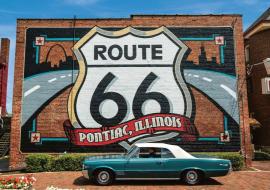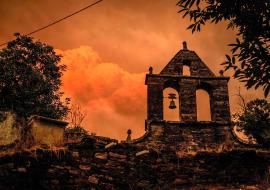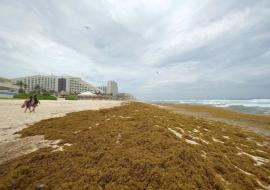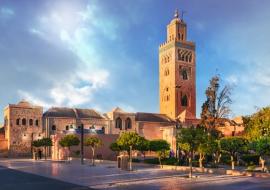Rodulfo Vaillant: Owner of the Music
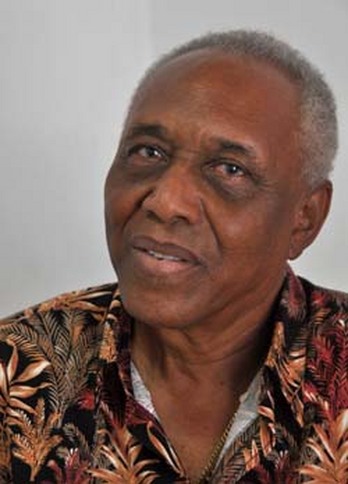
Such hits as Fue mi reloj, Se muere la tia, Yo no quiero que seas celosa, El lapiz no tiene punta, Quien dice (La Gorda)... are enough to show that Rodulfo Vaillant, chairman of the UNEAC Provincial Committee in Santiago de Cuba, owns the music. Beyond the applauses of thousands of dancers throughout the island, this tireless creator needs to spend his time founding.
Click on Santiago de Cuba: A City of 500 Years
In fact, Vaillant has been involved in the development of Heredia Theater —he was its first event-and-show organizer—, Estudios Siboney (where he produced a dozen LP, a list that includes Volume No. 1 Ache, by Merceditas Valdes, which made him win the EGREM Award), Jazz Friends Meeting and MatamoroSon, Santiago’s Culture Week, Tivoli Fair... and, of course, Boleros de Oro Festival. Since the late 1980s he has played an important role in the cultural scene of the so-called capital city of the Caribbean.
«Jose Loyola and I organized the first Festivals. In 1989 I brought him to Santiago, since I believed that we should pay tribute to this land because of bolero, one of its most authentic musical children along with trova and son. Unbelievably, its cradle wasn’t extoling its values and contributing to its presence on the national scene», Rodulfo said, a man that undoubtedly owes Los Hoyos neighborhood, where he was born, his passion for music.
«I was born in Los Hoyos, in my Santiago de Cuba, near Hatuey brewery. I lived in that neighborhood until I had my own family. The idiosyncrasy of this peculiar area of the city has music as the main characteristic. My house was surrounded by bars and dance places, near the rehearsal site of Los Hoyos’ Conga. I was also influenced by my family, as my uncles were musicians».
You were about to graduate as a trumpet player...
—Since I was a little boy my parents realized that I was interested in music and, while I was attending elementary school, I was studying music theory and solmization with Professor Alcibiades Castillo, who led my way to the third year of trumpet. I was put under pressure by my father, who thought that I had to learn a different profession. He wanted me to be a doctor, but I chose architecture, though I couldn’t make it. Nonetheless, I studied through the third year of Mining Engineering and I graduated as a surveyor-topographer. My studies stopped me from devoting time to the instrument.
You were in High School when you wrote your first song. How did you realize that you were good at writing songs?
—That happened when I was 12 years old. My first inspiration was entitled Bayamo, as a response to Arsenio Rodriguez’s song dedicated to Cardenas. My mother was the driving force behind my songs. There was a time when I was writing one song on a weekly basis.
«That first stage of my life was kind of crazy, since I was studying, writing sings, organizing balls and matinees, singing in parties and there were lots of people following my refrains... I was selling discs too...».
In 1965 there was another bolero, Arrodillate, which made you famous at national level. So, why dance music?
—Something unimaginable happened when I was 19: I was accidentally representing Orlando Contreras. That was amazing and opened the doors to relations with the musical realm. I’m talking about May 1961. I was with Contreras until late August, when I returned to my studies because of my mother. Anyway, that development made me feel totally fulfilled and my vocation and devotion for music was strengthened. The inspiration machine was growing.
«In 1962 I was helping Enrique Bonne organize carnivals. A year later I founded the Feeling Club, which comprised such singers as Esperancita Ibis, Tony Olmes..., and musicians like Osmundo Calzado and Fico Mariol. With this group we used to “assault” different bars at the time. We were doing something new.
«Arrodillate came up within this contest, a bolero that was listened to by Ezequiel Cardenas, a Havana-based singer that was visiting Santiago. He immediately recorded it and turned it into a phonographic hit in 1965. Arrodillate was also a kind of response to Aqui de pie, another popular song at the time. After that success I caught the eye of singers.
«In the carnivals of 1964, Sergio Calzado, one of the directors of Estrellas Cubanas, asked me to write one song and I saw a lifetime opportunity, as that orchestra, directed by Felix Reyna, was my favorite charanga. That was the hallmark that put my authorial profile on the map, by creating a successful binomial made up of Felix Reyna and me. We worked together in over 24 songs and created our own style».
You’ve written over 150 songs. How do you handpick the singers to defend your songs?
—Experience makes you take into account the style of different bands. Understanding this reality helped me write for several prestigious orchestras like Ritmo Oriental, Pancho el Bravo, Maravillas de Florida, Van Van... I have to say that the Festival of Charangas held in 2000 was dedicated to my name, because I was one of the most prolific authors in the repertoire of those orchestras.
What does Vaillant keep in mind, never forget, when it comes to writing a song?
—I become an orchestra when I’m going to write; I use the bass rhythm that guides my brain, and there is another key element: I have to picture myself dancing with the song. Nothing special, just the things we crazy people do... (He smiles).
Your songs have been performed by famous Cuban and international bands; they have been part of the soundtrack of movies (Plaff, En tres y dos); they have become anthems in carnivals. What out of all those things make you proud of them?
—I’ve lived many emotional moments, but listening to my music on the mouth of the people makes me feel very happy.
Just a few people know that, as a result of your effort, Cuban culture counts on Chepin-Choven band, as well as Irakere and Son 14...
—I certainly had to do with the creation of Son 14, Irakere and the comeback of Chepin-Choven band in 1972. In the 1970s and 1980s, I was the artistic director of Provincial Creator Festivals, MININT Amateurs Festival at the eastern province... Likewise, I was the founder and member, for six years, of the Organizing Committee of the remarkable Adolfo Guzman Cuban Music Contest; in charge of the musical program of CMKC radio station...
«That’s the reason why they have given me the title of Illustrious Son of Santiago de Cuba, UNEAC Emeritus Artist, Cuban Culture Distinction, Jose Maria Heredia Plaque, Raul Gomez Garcia Medal, and more...».
Over the past years, you’ve chaired the UNEAC Provincial Committee in Santiago de Cuba. Positive elements, dissatisfaction?
—As the chairman of this subsidiary of UNEAC, I believe that I have contributed to strengthen its image.








